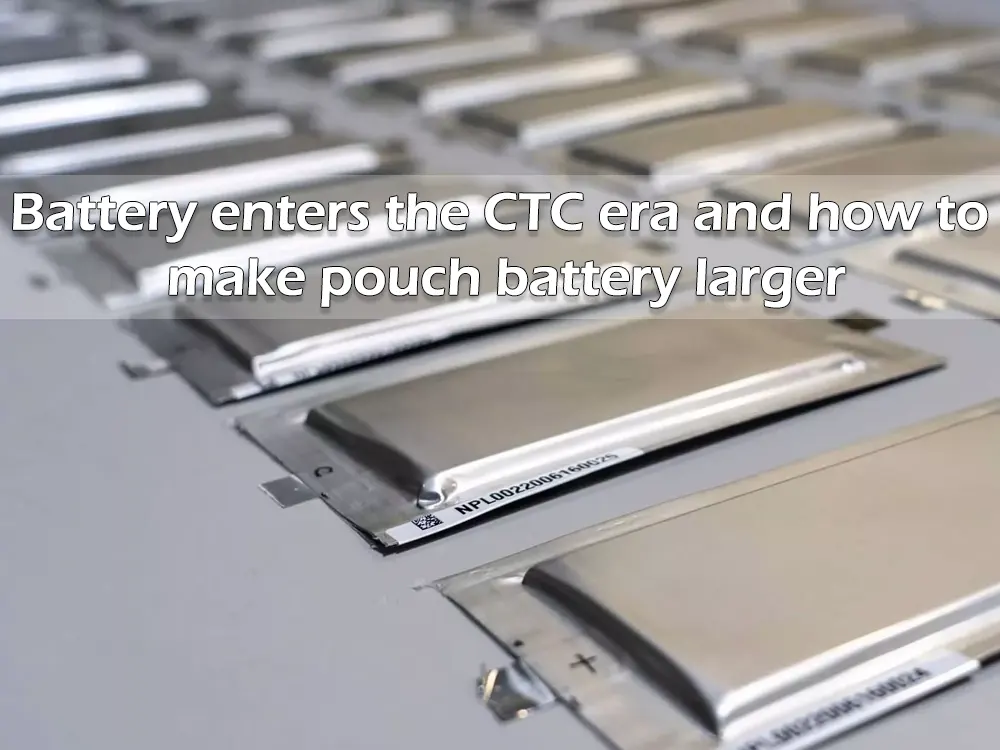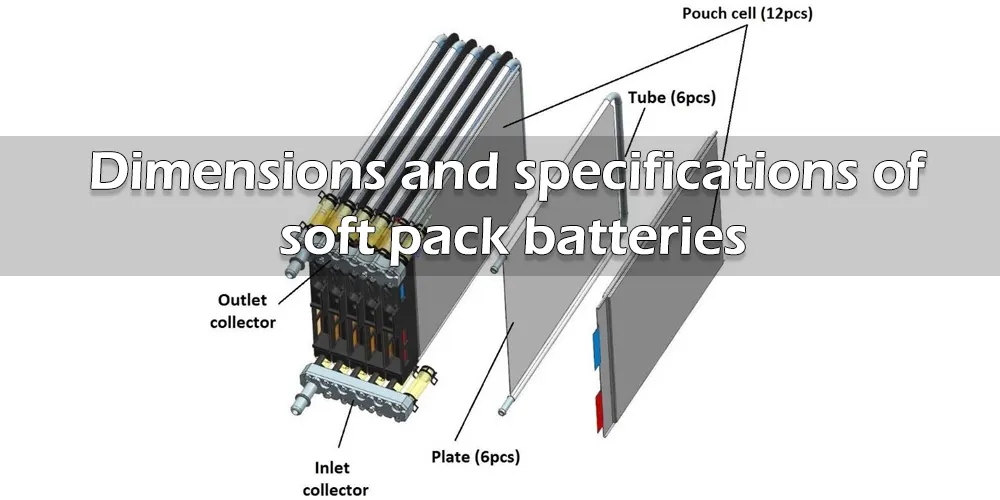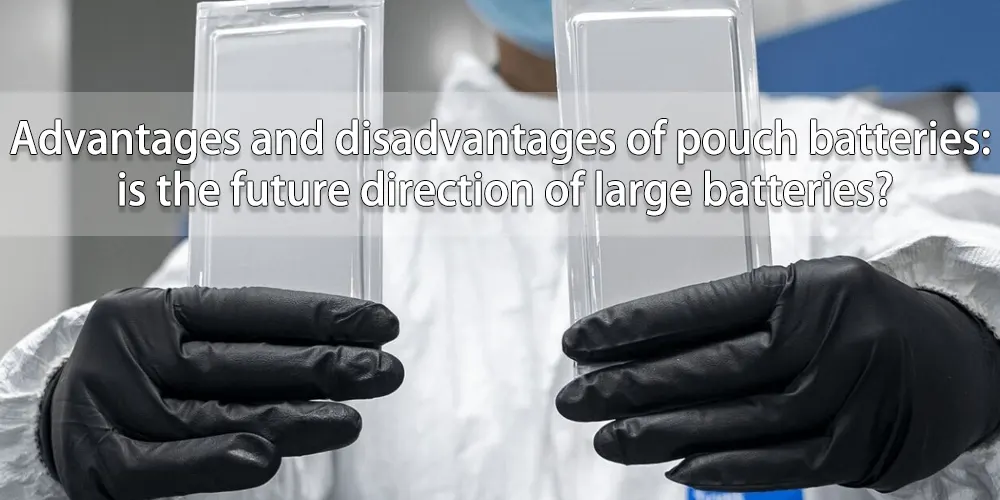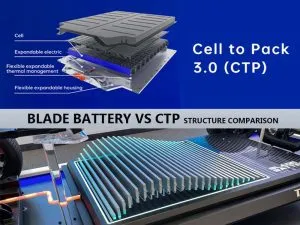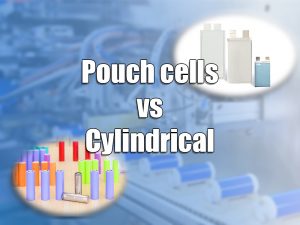Battery enters the CTC era and how to make pouch battery larger
As the product cooperation between power batteries and electric vehicles becomes more and more in-depth, how should batteries be optimized and how to adapt to more vehicle power battery scenarios? Around these considerations, there are several obvious trends in the form of power batteries:
First of all, the size and capacity of the battery cells are getting larger: not only the cylinders, but also the pouch and square are getting larger and larger.
- Cylindrical battery: evolved from 18650 batteries, to 21700 battery, and then to 4680.
- Square battery: From the original VDA size (148*26.5*91mm), it becomes wider and thicker.
- Pouch battery: it is also suitable for VDA modules (length 300mm), to MEB 590 modules (length 500mm+), and there is a trend to continue to develop into large soft packs.
The structure is also constantly simplified, especially after the battery design begins to move towards CTP and CTC. In this article, we will focus on the specification changes in the size of pouch batteries.

Dimensions and specifications of pouch batteries
From the perspective of production line and design, the size and volume of pouch batteries are flexible and changeable, and can be customized according to the space and chassis requirements of different models, providing convenience for the layout and structural design of future pure electric vehicles. Therefore, historically, in the first stage, the battery size was mainly defined by General Motors and Nissan respectively.
Customized battery cell stage – GM and Nissan
The earliest application of pouch batteries was around 2010. Typical models are GM’s Volt and Nissan’s LEAF, both of which use square pouch batteries with single-ended tabs. Batteries of these two specifications have been used for a long time, including the LEAF currently on sale, which still uses batteries of this specification.
VDA size specifications and 590 evolution specifications
With the demand for generalization of the module, in the process of adapting the size of the battery cell to the VDA standard size, 390 module and 590 module, the method of single-ended tabs is derived. At this time, the battery cells are used upright, and the entire structural design is iterated around the direction similar to the square battery module, but this also limits the development of pouch batteries.
Pros and cons of pouch batteries: is the future direction of large batteries?
For the pouch battery, in the long run, it must be made to match the design of the vehicle model. Its biggest advantage is that it is flexible in size and can be made into various shapes. In terms of manufacturing standardization, flexible design can be better realized. Therefore, when thinking about what kind of pouch battery size may be better, it must start from the needs of the car itself.
The length of the pouch cells designed by Farasis covers 400-800mm, the width covers 150-300mm, and the thickness covers 8-20mm, which means that the cells can be freely combined.
How to achieve a balance between size and efficiency, the more mature direction is to focus on the direction of the pouch large battery cells, making the battery cells longer and wider, which will help the overall design and layout. From the perspective of structural design, the effect of structural design improvement brought about by the readjustment of dimensions is obvious.
While keeping the size of the chassis of the battery system unchanged, Farasis SPS can flexibly adjust the height of the chassis of the battery system by adjusting the thickness of the large pouch cells arranged horizontally. That is to say, the same chassis and one battery cell can be adapted to all passenger models.
The change in the thickness of the battery cell allows the chassis height of the SPS to be flexibly configured between 85mm and 145mm. Equipped with large soft-pack batteries with different energy densities, the battery system has different charging capacities from 80kWh to 150kWh.
Farasis SPS battery specification direction
In fact, if an automobile company covers all models and makes pure electric vehicles, there are several thorny problems:
- The size and platformization of the battery pack must be considered
- The power coverage needs to be relatively balanced, that is, relatively complete
- System considerations should be carried out inside the battery
That’s why there is a requirement for the battery system to cover all the power from 50-150kWh, and the pouch battery can be adjusted from the three parameters of length, thickness and width to solve these problems.
● Battery size design optimization
The design of Farasis’ pouch cells is flexible in size, so the design pattern of CTP can be imported. From the perspective of other countries, the technical routes of battery manufacturers such as LG and SK On are all developing from the original module concept to the module direction. Different design ideas are reflected in great differences in products.
● Dimensional efficiency due to modular construction
The difference in efficiency brought about by the stacking mode can be seen that the volume utilization rate given by Farasis is 75%. Volume utilization rate = utilization rate in X direction * utilization rate in Y direction * utilization rate in Z direction.
In the design of SPS, the biggest defect of the pouch design has been completely made up. This is still very remarkable, and the flexibility of the soft bag has been fully utilized. In addition, the size of the battery cell becomes larger, and the total number of series and parallel connections becomes smaller, which can save some structural parts and connection designs of traditional modules.
How will the large-scale manufacturing proceed after the battery cell larger?
In the field of blade batteries, we see that there is a high requirement for the accuracy of the laminations – if the alignment accuracy is not high enough, it will affect the final battery performance.
Similarly, the manufacturing requirements of large pouch batteries are also increased. Therefore, after upgrading the battery manufacturing, the adjustment of the whole process is very critical, which is not easy to do. From the perspective of the development of the industry, many companies are constantly improving the lamination technology.
The more challenging path is to adopt the thermal lamination of pole pieces and the fusion technology of multi-piece lamination. The battery separator and pole piece are bonded and cut in advance, which solves the problem of wrinkles caused by the tension release of the separator during the lamination process.
In addition, how to solve the efficiency of stacking. The industry is trying to use multi-knife cutting and multi-sheet stacking technologies, and in terms of stacking machines, the whole machine integrates the functions of pole piece unwinding, cutting, thermal lamination, multi-piece flying stacking, and hot pressing.
By shortening the sheet material transfer between the pole piece coil and the stacking, the processing accuracy error between the pole piece cutting and the lamination is reduced, and the hot-pressed pole group pole pieces are in a stable bonding state.
Moreover, at the manufacturing end, the ability to detect product defects has been improved by integrating the CCD defect and size detection system, ensuring real-time monitoring and elimination of poor alignment during the stacking process. This also provides a substantial path for increasing the size of pouch batteries.
Conclusion
From a global point of view, the battery cells are all developing towards gigantic size. This is for the sake of manufacturing efficiency, and at the same time, it also takes into account the grouping rate of the entire package and the requirements for cost reduction. Before the localization of aluminum-plastic film in China, pouch batteries have been in a relatively weak position in the Chinese market.
However, with the progress of China’s material production and the continuous accumulation of pouch technology, the technical path of large pouch cells represented by Farasis is also to increase the size and optimize the structure. The pace of development of this path is consistent with that of square and cylindrical batteries. With the gradual presentation of the details of the SPS scheme, it can be seen that this is already a very important direction and is worth long-term observation.

